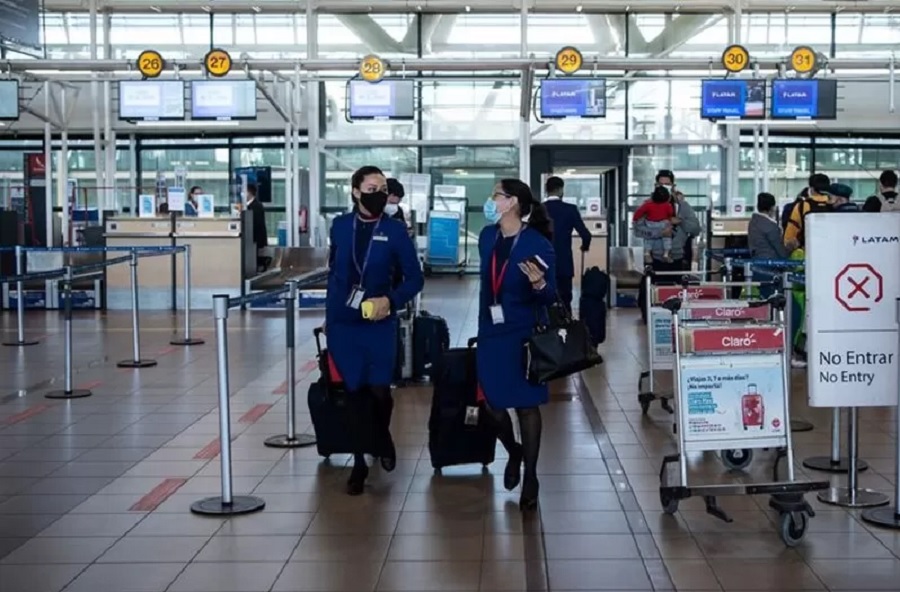RIO DE JANEIRO, BRAZIL – According to the World Health Organization, the pandemic has killed over 5 million people and caused 253.1 million infections worldwide. America is the most affected region, with 2.3 million deaths and 95.1 million cases, while 1.4 million people have died and 81.1 million have been infected in Europe.
CUBA REOPENS ITS AIRPORTS
Cuba’s airports and hotels reopened to international tourism today, and 700,000 elementary school students returned to classrooms.

Cuban President Miguel Díaz-Canel visited a primary school in Havana, which welcomed its students back as part of the resumption of the 2020-2021 school year.
The reopening measures, prompted by the decrease in infections and deaths, coincided with a tense atmosphere on the island due to a march called by the opposition platform Archipiélago against violence, calling for the release of political prisoners and the solution of issues through democratic and peaceful means.
In Cuba, 8,283 people have died in the pandemic, while the number of infections reached 959,064. Over 8.1 million Cubans, out of a total population of 11.2 million, have completed the 3 required doses of the locally produced vaccines: Abdala, Soberana 02 and Soberana Plus.
CHILE TO REOPEN LAND BORDERS ON DECEMBER 1
Chile announced that it will reopen its land borders on December 1 after an 8-month closure during which entry has been only partially allowed through a few airports.
According to Undersecretary of Health Paula Daza, it will be possible to enter Chile through 3 points: Chacalluta and Colchane (north), which border Peru and Bolivia, respectively, and Pino Hachado, in the Araucanía region (center-south), a landmark crossing with Argentina.
These entry points join the 4 airports now open in Santiago and in the cities of Iquique and Antofagasta (north) and Punta Arenas (south).
With an internationally praised vaccination process, Chile currently has no municipality quarantined. Data indicate that 38,001 people have died and 1.7 million have been infected during the pandemic.
INFECTIONS INCREASE BY 21% IN BOLIVIA
Experiencing a fourth surge in the number of infections, Bolivia today reported a 21% increase in the number of cases in the past week compared to the same period last year, rising in all of the country’s 9 departments.
According to Minister of Health Jeyson Auza, despite the 21% increase, there has been a “sharp decrease in the lethality rate,” which stands at only 0.8%. The three previous peaks, the first in mid-2020, the second and third in the first semester of this administration, registered a case fatality rate of 6.2%, 2.7% and 2.8%, respectively.
The Minister highlighted the effect of the national immunization plan which has administered 3,775,947 first doses, 3,004,128 second doses, as well as 362,760 provisional third booster shots and 961,358 single doses since late January.
The Ministry of Health reported that coverage stands at 64% in first doses and 55.2% in second doses among the vaccine-eligible population, which comprises over 7.6 million people, and to which those over 12 years of age were recently included.
PERU RESTRICTS MOBILITY OF NON-VACCINATED PEOPLE
People over 45 years of age may not board interprovincial transport buses as of Monday in Peru unless they can prove that they have been vaccinated against Covid-19 with the full two-dose regimen, in the first measure implemented to encourage vaccination and restrict the mobility of those who have not been immunized.
Likewise, Peruvian authorities stated that, as of December 15, no person over 18 years of age will be allowed to enter enclosed public spaces without proving that he/she has been fully vaccinated.
The restrictions also apply to urban public transport drivers and ticket collectors, as well as to home delivery drivers, who will only be allowed to work if fully immunized.
Over 16.6 million people are currently fully vaccinated in Peru with two doses, representing 60% of the target population. However, 4.5 million people have only been vaccinated with one dose and the majority have not attended vaccination centers to receive the second dose.
PUERTO RICO BUSINESSES TO REQUIRE PROOF OF VACCINATION
An executive order announced today by Puerto Rico governor Pedro Pierluisi establishes that companies with 50 or more employees will be required to demand proof of vaccination against Covid-19 from staff working on-site.
Pierluisi said the measure seeks to contain infections and also mandates the vaccination of children between 5 and 11 years of age.
“In order to prevent a significant increase and in view of the upcoming holidays, certain measures must be maintained and other efforts must be made to include the most vulnerable sectors in order to maintain the low rates that have made us a model for other jurisdictions,” the chief executive said.

